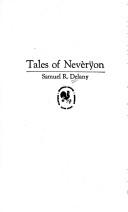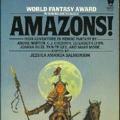If Conan the Barbarian was written by Margaret Mead and Michel Foucault
An anthology of interwoven short stories that take place in a fictional ancient civilization - heavily implied to be the first ancient civilization, actually. Two pairs characters feature in all of them, until they finally meet in the last one; Norema, the barbarian woman and her companion Raven, a warrior from a matriarchal society who is constantly accosted by culture shock in this strange country where men do get to make decisions, and Gorgik and Little Sarg, the lovers, who use their old slave collar as a ruse to free other slaves, as well as a powerful symbol within their sexual relationship. (Look, Delany is a man of interesting sexual tastes and little shame, so you're going to find out about them.)
While that makes this book sound pretty lurid (which is why I decided to read it, not gonna lie), it's actually much more concerned with portraying the …
An anthology of interwoven short stories that take place in a fictional ancient civilization - heavily implied to be the first ancient civilization, actually. Two pairs characters feature in all of them, until they finally meet in the last one; Norema, the barbarian woman and her companion Raven, a warrior from a matriarchal society who is constantly accosted by culture shock in this strange country where men do get to make decisions, and Gorgik and Little Sarg, the lovers, who use their old slave collar as a ruse to free other slaves, as well as a powerful symbol within their sexual relationship. (Look, Delany is a man of interesting sexual tastes and little shame, so you're going to find out about them.)
While that makes this book sound pretty lurid (which is why I decided to read it, not gonna lie), it's actually much more concerned with portraying the contrast between "barbarism" and (it also needs quotes) "civilization". The main difference between these two groups is really just a power relationship, and not intelligence, or even very visible in the lives of everyday people. This book takes place in a time where money, writing and even keys have only just been invented, and are not widely adopted yet. The "civilized" discuss how money and the invention of four-legged pots will shape society, and the "barbarians" discuss Freudian ideas on gender relations.
It's a strange little novelty, that probably never really got popular because it manages to alienate both of its possible audiences. The cover alone would turn away any high-brow intellectual, and the discussion on how to do proper theoretical analysis in chapter two would scare off any sword-and-sorcery fan. If you, by any chance, happen to fall into both of those categories, you'll probably enjoy this. If you're just wondering in fascination how Samuel Delany managed to combine those two elements, like I did, you probably will as well.
An especial treat is the last chapter, which is structured like an academic paper written about the ancient clay tablets that relate the plot of the previous chapters. It reads like a pastiche on the type of male historian who looks at any attempt to interpret history in a way that includes women's agency and potential to shape their society with benevolent paternalistic condescension. The idea that this ancient text could be written by a woman (and we, the reader, know by context clues that it was) is completely alien to him.
I have to say, I do appreciate that about Delany. The feminism in this book is very seventies, and you could write a decent Tumblr discourse post on all the ways it fails, but you don't often get a male writer so solidly on the side of feminism, so it's always quite refreshing.

